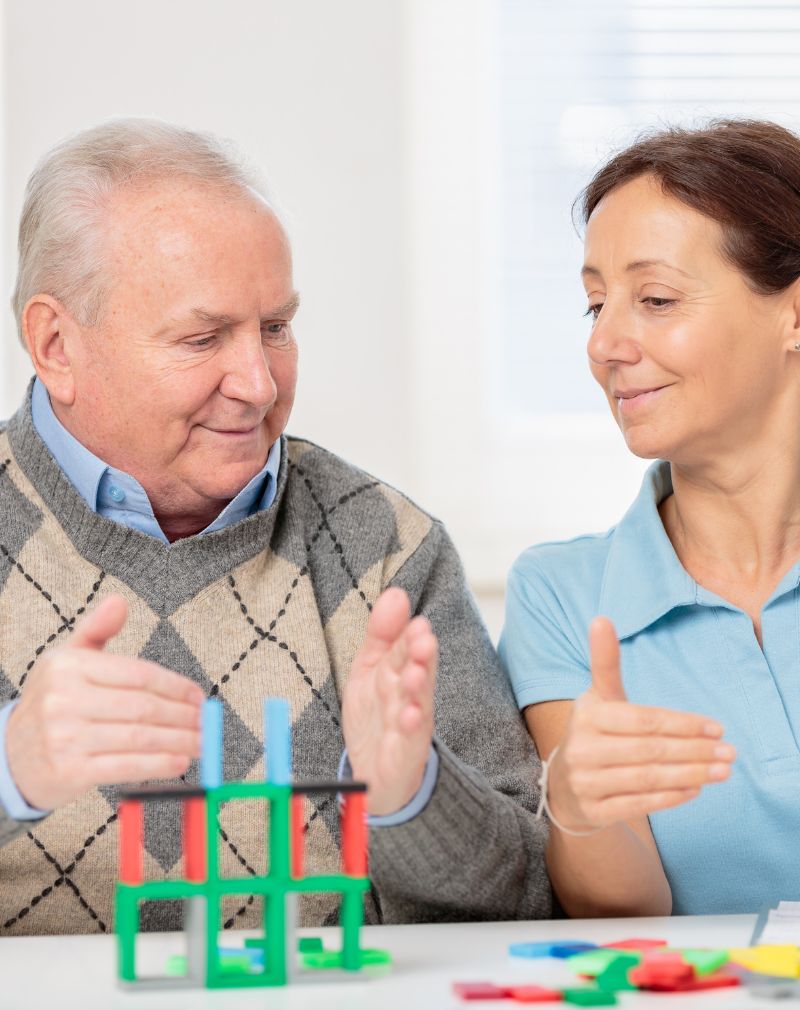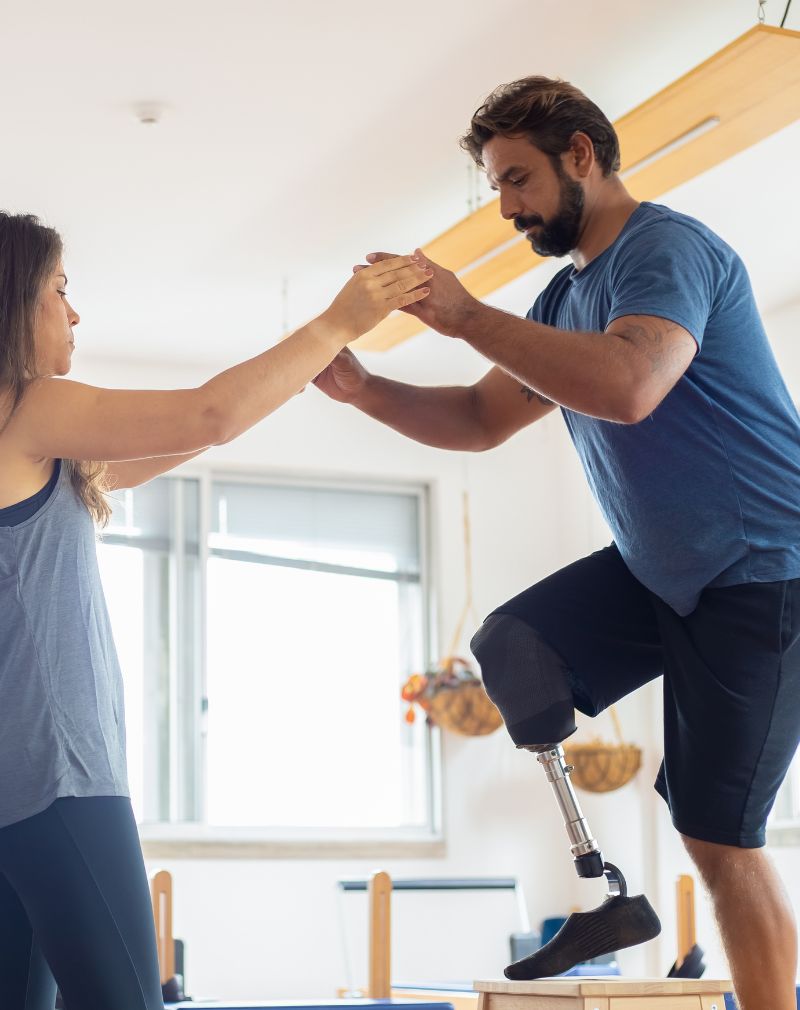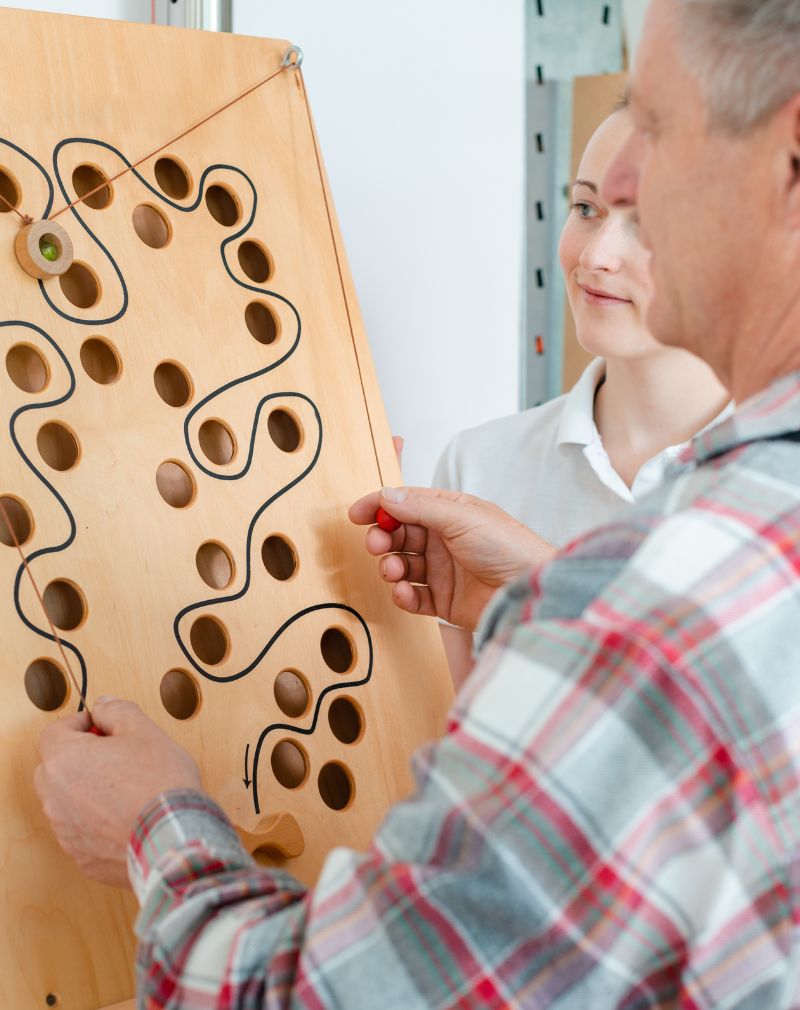You don’t notice it when your hand grips a cup. Or when your foot shifts to catch your balance. But when those things stop working, you notice everything.
Suddenly, pouring coffee feels like surgery. Buttoning a shirt feels like a puzzle. You’re not lazy. Your brain just forgot how to move.
This is what neuromuscular re-education is for. It helps your body remember what it once knew. Step by step. Nerve by nerve.
At The American Wellness Center in Dubai Healthcare City, Occupational Therapists do this work every day. They don’t chase perfection. They chase function.
Because the goal isn’t to walk like before. It’s to live again.
Understanding Neuromuscular Re-Education
Neuromuscular re-education teaches your body how to move again. It’s not exercise for the sake of movement. It’s movement with memory.
When nerves get damaged, the brain and body stop speaking the same language. This can happen after a stroke, a head injury, or even joint surgery. Suddenly, the things you did without thinking now need full attention.
NMR helps rebuild those broken signals. It uses repetition, guided movements, and sensory feedback to retrain lost skills. The science behind it is called neuroplasticity. That means the brain can rewire itself.
This is the kind of therapy that helps someone hold a spoon again. It helps a child with cerebral palsy sit upright. It helps a father, post-surgery, walk to the fridge without fear.
At its heart, neuromuscular re-education is simple: Help the brain remember what the body forgot.
Techniques & Tools in Practice
Every movement we re-train has a purpose. That’s why no two sessions look the same.
Some use PNF — a method of stretching that wakes up sleeping muscles. Others rely on the Bobath approach, guiding the body back into patterns it lost. Balance drills, core training, and posture correction are all part of the mix.
For patients with more complex needs, we bring in tools. Electrical stimulation can jump-start a weak muscle. Biofeedback shows your body what it’s doing in real-time. Virtual reality is no gimmick — it’s a mirror that moves with you.
Each tool we choose is not about fancy tech. It’s about restoring function that matters: brushing your teeth, tying a shoelace, opening a door.
That’s the goal. Not just better movement — but better life.
What Progress Really Looks Like
Progress in neuromuscular re-education isn’t flashy. It’s not about a dramatic before-and-after.
It’s quiet. Slow. Real. And it shows up where it counts.
Therapists at The American Wellness Center in Dubai Healthcare City measure recovery by what you can do again.
Not just with your body — but in your life.
You’ll often see gains in:
- Getting dressed without a second thought
A task that once took fifteen minutes suddenly takes five. - Walking across a room without fearing the floor
Not with speed, but with confidence. - Holding a pen, making a list, signing your name
Small things. But they matter.
Therapists track grip strength, range of motion, posture, and timing. But what matters most is the smile when someone says, “I did it myself.” That’s the goal. And the gold standard.
A Day in the Life: Neuromuscular Therapy at AWC
Let’s talk about Bilal. He’s 42. A banker. Moved to Dubai from Lebanon. Three months ago, he had a mild stroke. He could walk. But his right hand wouldn’t obey.
At The American Wellness Center in Dubai Healthcare City, his sessions looked nothing like a gym. They looked like life.
- Picking up coins off the table.
- Stirring a spoon in a teacup.
- Practicing how to turn a car key.
Week by week, his hand remembered. What mattered wasn’t the reps. It was that every movement had a purpose.
AWC’s team factored in Bilal’s culture, language, work demands — even how he likes his coffee. Therapy was never one-size-fits-all. It was him-sized. And that’s the difference.
More Than Muscles: Where NMR Fits in at AWC
At The American Wellness Center in Dubai Healthcare City, neuromuscular re-education is part of a bigger picture. Our Occupational Therapy team doesn’t just fix movements. They rebuild lives.
Sessions might include:
- Dressing drills using your actual clothes
Not some clinic gown, but your real buttons, your real sleeves. - Kitchen simulations with real-world tasks
Like making breakfast, not stacking cones on a table. - Workplace role-play
For patients trying to return to an office or service job, we recreate those spaces.
Our therapists collaborate closely with physiotherapists, speech therapists, and even mental health specialists. Because sometimes the body needs backup. And healing is a team sport.
For Those Who Want to Start: Here’s What Helps
If you or someone you love is considering neuromuscular re-education, here’s what to know:
- It’s not passive
You won’t be lying on a mat while someone moves your arm. You’ll be doing the work. - The goals are yours
Not every patient wants to run. Some just want to chop vegetables again. We work toward that. - Homework matters
The exercises don’t stop when you leave the clinic. Progress lives in your routines, not just in your sessions. - Choose your team wisely
At The American Wellness Center in Dubai Healthcare City, our occupational therapists specialize in real-world rehabilitation — not just textbook therapy.
And Then One Day, It Happens
You zip your jacket. You hold a fork without thinking. You grab your kid’s hand before they cross the road.
That’s recovery.
Neuromuscular re-education doesn’t give you your old life back. It gives you something better: a life that works with the body you have now.
At The American Wellness Center in Dubai Healthcare City, we see this every week. Not miracles. Not magic. Just people reclaiming motion, memory, and meaning.
If you’re ready to start, we’re here. Let’s help your body remember what it once knew.



